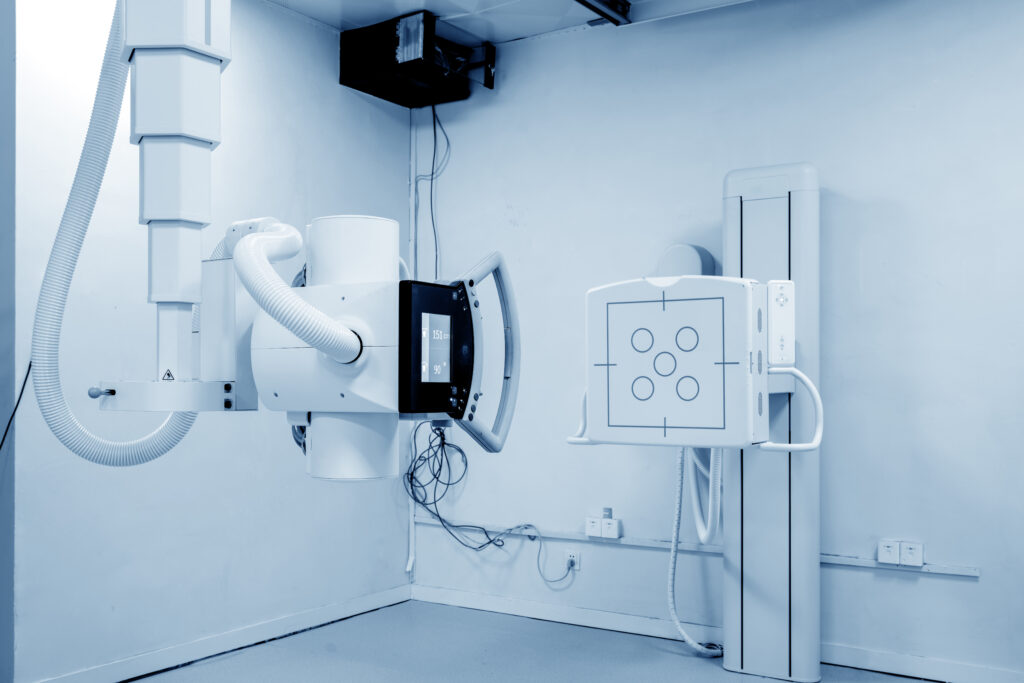
Radiology is the science of studying the body through the use of X-rays and radiation. Radiology is essential in diagnosing and treating numerous diseases, including cancer. With a combined 80+ years of experience in diagnostic radiology Drs. Steven Diehl, Damian Clossin, and Lawrence McNiesh join with the diagnostic radiology team to perform radiology services for patients suffering from anything from lower back pain to skin conditions. Some of the most common radiologic tests include CT scans, MRIs, and ultrasounds.
General Radiology Q & A
What is radiology?
Radiology is the science of studying the body through the use of X-rays and radiation. Radiology is essential in diagnosing and treating a number of diseases, including cancer.
The physicians perform radiology services for patients suffering from everything from lower back pain to skin conditions. Some of the most common radiologic tests include CT scans, MRIs, and ultrasounds.
What is an ultrasound?
Ultrasound scans use sound waves to create images of the body. As such, ultrasounds don’t emit radiation of any kind and therefore are safe to use in several applications.
Some types of ultrasounds include:
- Abdominal ultrasound to examine the liver, kidneys, spleen, and other abdominal organs
- Pelvic ultrasound to examine the cervix, vagina, fallopian tubes, uterus, and ovaries
- Gallbladder ultrasound to examine the gallbladder
- Thyroid ultrasound to examine the thyroid gland
- Breast ultrasound to examine breast tissue and structure
What is nuclear medicine?
Nuclear medicine is a type of radiology that uses a small dose of radioactive material that travels through the body to generate images of internal structures. Nuclear medicine techniques help the physicians view areas of the body, such as heart and brain blood flow, that may not appear on more traditional scans.
Some nuclear medicine procedures are:
- Hepatobiliary scans to view liver and gallbladder issues
- Bone scans conducted with or without SPECT-CT imaging to diagnose bone problems
- VQ (ventilation–perfusion) scans to analyze air and blood flow in the lungs
- Radioiodine (I-131) scans to treat an overactive thyroid or thyroid cancer
- Parathyroid scans to examine overactive parathyroid glands
Nuclear medicine allows your dedicated physician to understand how complex bodily systems work to better treat you.
What is fluoroscopy?
Fluoroscopy scans capture body parts in motion and can be applied to both solid structures such as bones and joints and organs such as the lungs or heart.
For example, fluoroscopy helps the team diagnose problems of the digestive system through barium swallows or enemas. The patient ingests barium in the upper GI or lower GI tracts, which then moves throughout the system and captures X-ray images. Barium appears white on the X-ray image, so they can see the specific structure of the organs.
The providers also use fluoroscopy techniques to perform cystograms (exams of the urethra and bladder) and small bowel follow-through tests, which track the movement of liquid through your entire GI tract.
Please schedule an appointment at Cambria Somerset Radiology today to discuss your radiology needs with our expert team.
